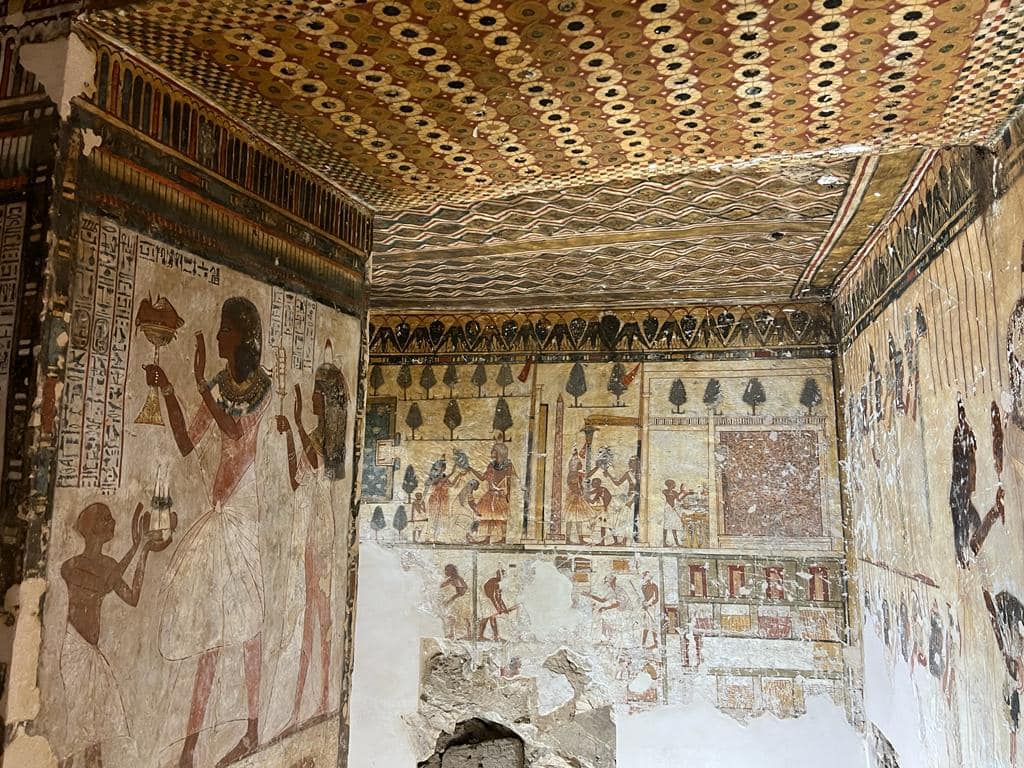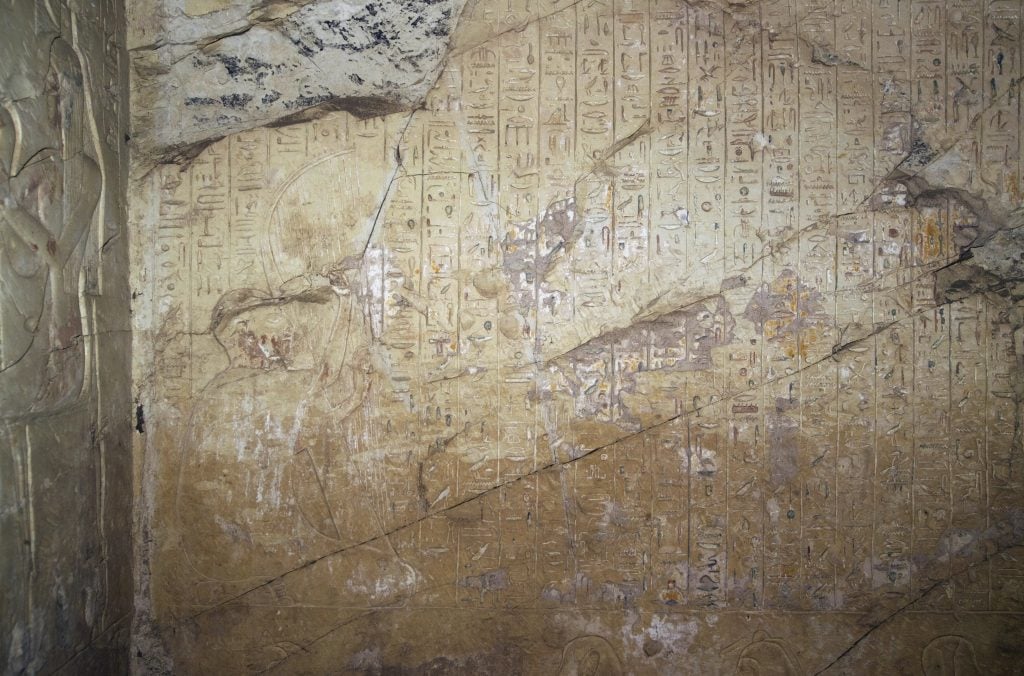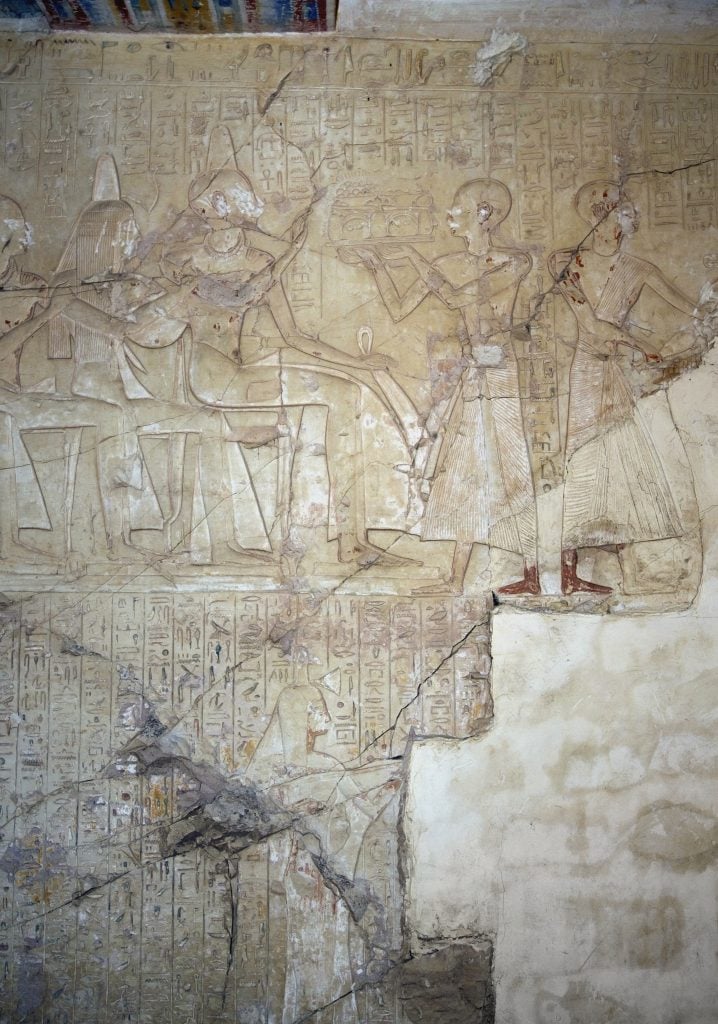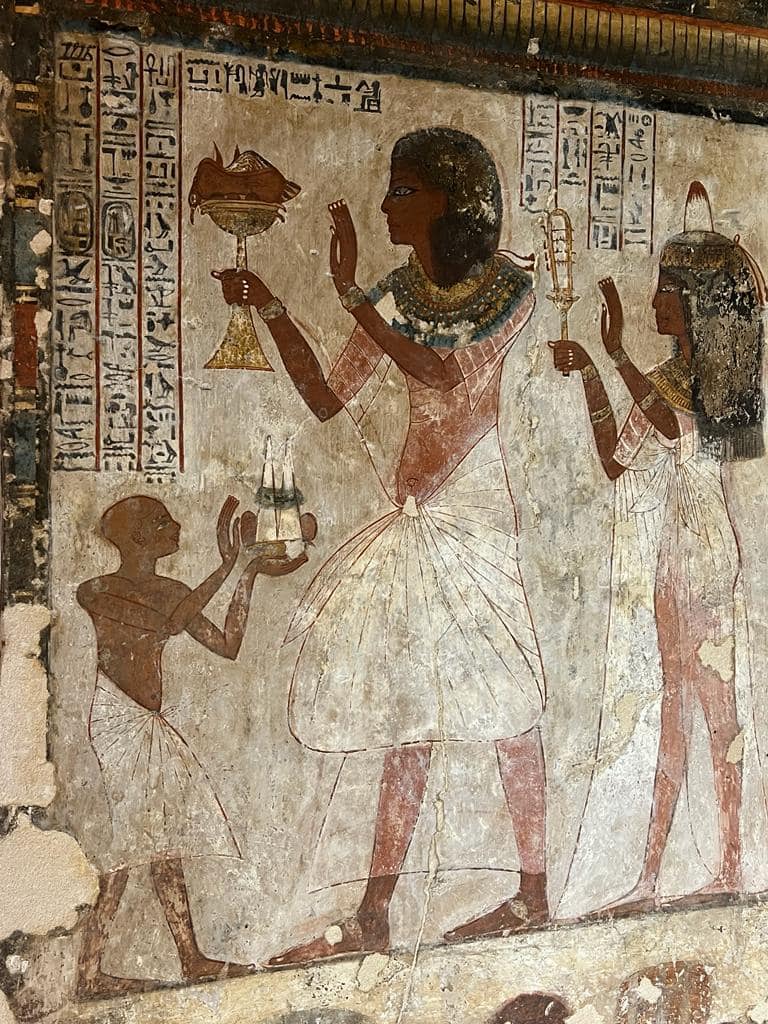Archaeology & History
Peek Inside the Ancient Egyptian Tomb of Neferhotep, Now Open to the Public
The tomb has reopened after nearly two decades' worth of restoration.

A prominent Egyptian scribe from the 18th Dynasty has been resurrected on the west bank of Luxor—well, their tomb, at least. After nearly 20 years of restoration work, the tomb of Neferhotep has reopened for tourists to gaze into the eyes of history.
The country’s secretary-general of the Supreme Council of Antiquities, Mostafa Waziry, and Argentinian ambassador, Gonzalo Oriolabeta, inaugurated the much-anticipated reveal. The completion of the restoration was aided by an Argentine mission affiliated with the University of Buenos Aires and headed by Violeta Pereyra under the council’s supervision.
Before he was put to rest in the Khokha area, Neferhotep served as a statesman of his time, his most notable title being the Scribe of Amun, one of the eight primordial Egyptian deities. Although pharaohs are typically the figures associated with tombs, members of the nobility and officials were often mummified and buried with the same treatment.
Scribes were highly valued members of Egyptian society and assigned to many high roles, and one of them, Horemhab, even became pharaoh, according to the Michael C. Carlos Museum of Emory University.
The Neferhotep tomb contains cues that point to his social significance, including a chapel featuring visuals resembling the Great Temple of Amun and a vestibule depicting the royal palace. The burial chamber dates back to the era of king Ay (1327 to 1323 B.C.E).
“The opening of the cemetery today adds a new tourist shrine of extremely importance and uniqueness to the shrines of the Western Mainland in Luxor in the light of what the province is seeing a large influx of tourists,” said Waziry.
Revitalizing ancient artifacts is no easy lift. All the wall paintings, reliefs, and sculptures required stabilizing loose stone fragments, cracks, detached plaster, and paint layers, not to mention cleaning and preserving surfaces damaged by fire and time. The restoration project started in 2000 when the Argentinian University team took on their own roles as scribes by documenting and analyzing the texts in the tomb.
See more images of the tomb below.

Inside the tomb of Neferhotep in Luxor. Photo courtesy of the Egyptian Ministry of Tourism and Antiquities.

Reliefs in the tomb of Neferhotep. Photo: DeAgostini/Getty Images.

Reliefs in the tomb of Neferhotep. Photo: DeAgostini/Getty Images.

Inside the tomb of Neferhotep in Luxor. Photo courtesy of the Egyptian Ministry of Tourism and Antiquities.





